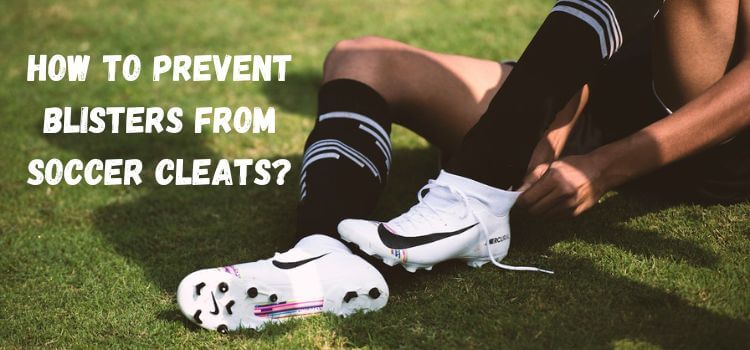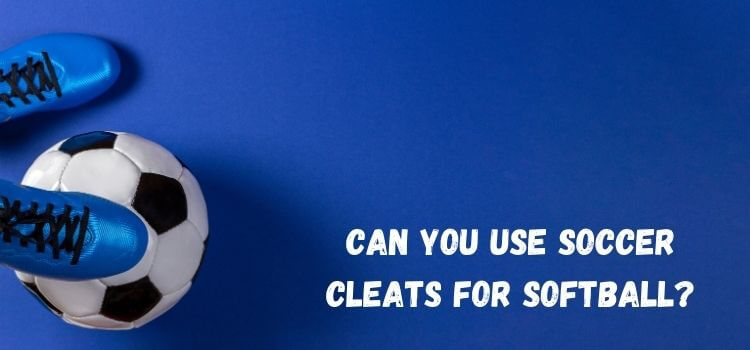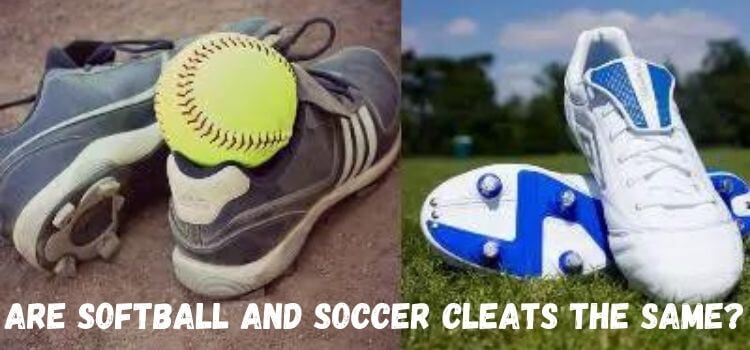As an Amazon Associate, I earn from qualifying purchases
Are painful blisters putting a damper on your soccer enthusiasm? Whether you’re a seasoned player or just getting started, the last thing you want is discomfort slowing you down on the field. In this comprehensive guide on “how to prevent blisters from soccer cleats,” we’ll explore practical strategies to keep those pesky blisters at bay, allowing you to focus on your game without the distraction of foot discomfort.
From selecting the right cleats to essential foot care tips, we’ve got you covered with insights that can make a significant difference in your soccer experience. Let’s kick off this journey to blister-free soccer enjoyment!

Why Do Blisters Occur?
Blisters are often a result of friction between the foot and the cleats. Ill-fitting cleats or those made from abrasive materials exacerbate this friction, leading to painful blisters.
Ensuring the right fit and understanding the dynamics of foot movement within the cleats is crucial in preventing blisters.
Choosing the Right Cleats
Investing in properly fitting cleats is paramount. Consider factors such as material, size, and design. Opt for cleats made from breathable materials that offer flexibility and support.
Additionally, ensure ample space for the toes to move comfortably to minimize friction.
Breaking in New Cleats
New cleats often require a breaking-in period. Avoid wearing them for extended periods initially. Gradually increase wearing time to allow the cleats to mold to the shape of your feet without causing excessive friction.
Sock Selection
The right socks play a significant role in preventing blisters. Choose moisture-wicking socks that keep the feet dry and reduce friction. Additionally, opt for cushioned socks that provide extra padding and protection against blisters.
Using Protective Gear
For added protection, consider using blister pads or tapes. These adhesive pads create a barrier between the foot and the cleats, reducing friction and minimizing the risk of blisters. Apply them to areas prone to blister formation before wearing cleats.
Proper Foot Care
Maintaining proper foot hygiene is essential in preventing blisters. Keep your feet clean and dry, especially before wearing cleats. Moisturize dry areas to avoid skin irritation and cracking, which can lead to blisters.
Pre-game Precautions
Before a game or practice session, warm-up exercises and stretching can help prepare the feet and minimize the risk of blisters. Focus on stretching the Achilles tendon and calf muscles to ensure flexibility and reduce foot strain.
During the Game
Pay attention to any discomfort or hot spots developing on your feet during gameplay. If you feel excessive friction or discomfort, consider adjusting your cleats or taking a short break to alleviate pressure points.
Post-game Care
After playing, clean and dry your cleats thoroughly to prevent bacteria buildup and odor. Remove any dirt or debris that may have accumulated during gameplay. Proper maintenance prolongs the lifespan of your cleats and reduces the risk of blisters.
Alternative Solutions: How to Prevent Blisters from Soccer Cleats?
In addition to preventive measures, consider using custom insoles or orthotics designed to provide additional support and cushioning. These inserts can help redistribute pressure and reduce friction, preventing blisters.
Addressing Specific Foot Issues
Individuals with pre-existing foot conditions such as bunions, corns, or calluses may be more susceptible to blisters. Consult a podiatrist or sports therapist to address these issues and explore customized solutions to minimize discomfort.
Professional Assistance
If blisters persist despite preventive measures, seek professional assistance. Podiatrists or sports therapists can assess your foot biomechanics and provide tailored recommendations to alleviate discomfort and prevent future occurrences.
Common Myths Debunked
Various myths surround blister prevention, such as applying petroleum jelly or wearing two pairs of socks. While these methods may offer temporary relief, they are not scientifically proven to prevent blisters effectively. Stick to evidence-based strategies for optimal results.
Conclusion: How to Prevent Blisters from Soccer Cleats?
Preventing blisters from soccer cleats is essential for maintaining comfort and performance on the field. By choosing the right cleats, wearing appropriate socks, using protective gear, and practicing proper foot care, players can minimize the risk of blisters and focus on enjoying the game.
Frequently Asked Questions (FAQs)
Wearing two pairs of socks may increase friction and heat, exacerbating the risk of blisters. Opt for moisture-wicking, cushioned socks instead.
Cleats should fit snugly without causing discomfort or pressure points. Ensure ample space for toe movement and minimal sliding within the cleats.
Stretching exercises focusing on the Achilles tendon and calf muscles can help improve flexibility and reduce strain on the feet, minimizing the risk of blisters.
It’s advisable to break in new cleats gradually to allow them to mold to the shape of your feet. Avoid wearing them for extended periods initially to prevent blisters.
Replace your cleats when they show wear and tear, such as worn-out studs or decreased cushioning. Properly maintained cleats can last an entire season or longer with regular use.
Read Our More Articles
- Are Laceless Soccer Cleats Good? A Comprehensive Guide
- What Do Soccer Cleats Look Like on the Bottom? A Closer Look
- Can You Play Soccer with Football Cleats? The Ultimate Guide
As an Amazon Associate, I earn from qualifying purchases


